Last of the Great Flying Boats: The Short Solent
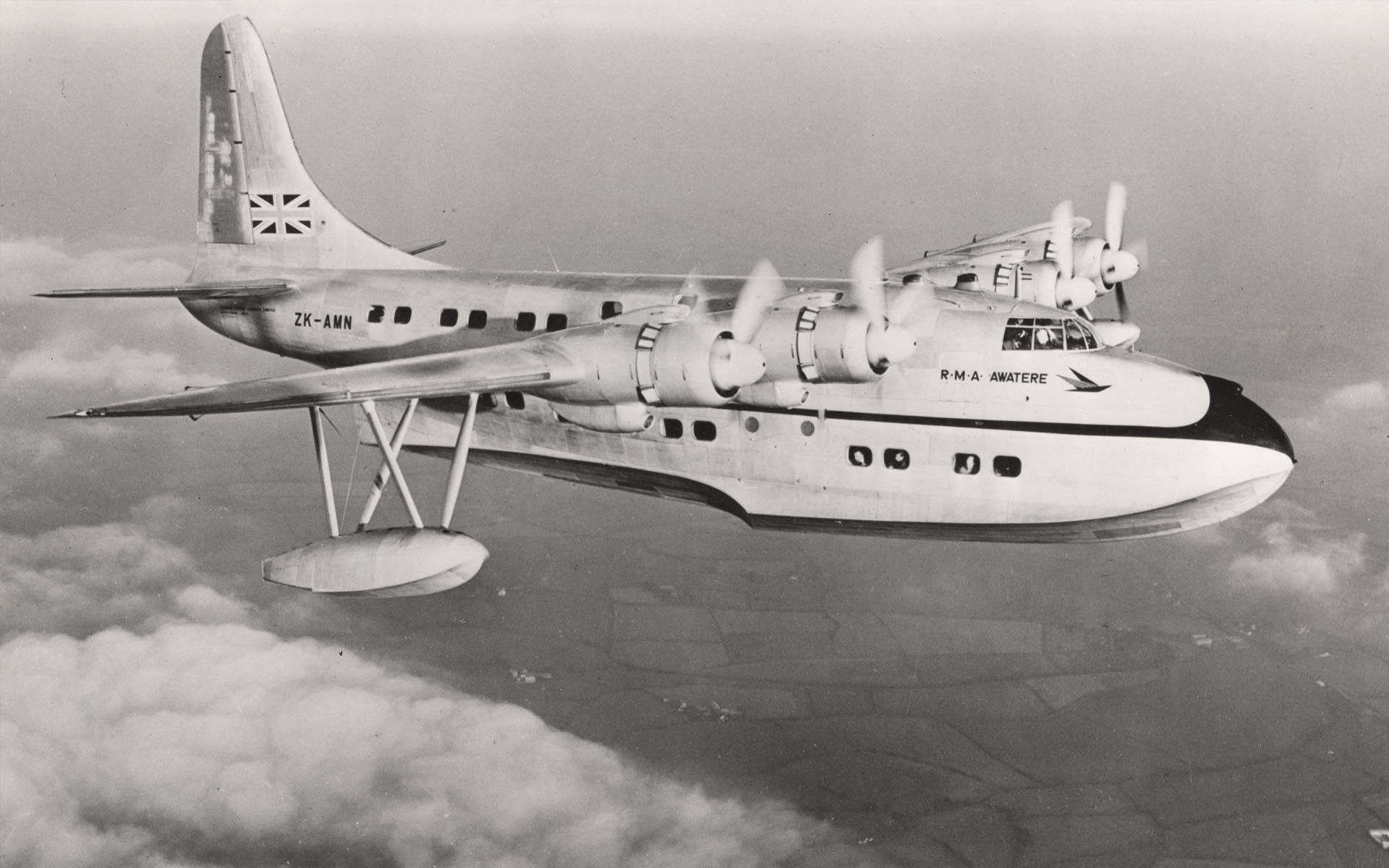
This blog was written by Paul Tibbutt, Walsh Memorial Library volunteer
The Short S.45 Solent was the culmination of many successful flying boats designed by Short Brothers and Harland who were based in Rochester, England and later Belfast, Northern Ireland. Earlier designs that also had an influence on New Zealand’s aviation scene included the S.30 ‘Empire Class’, S.25 ‘Tasman Class’ Sandringham and S25 Sunderland (a converted Sandringham).
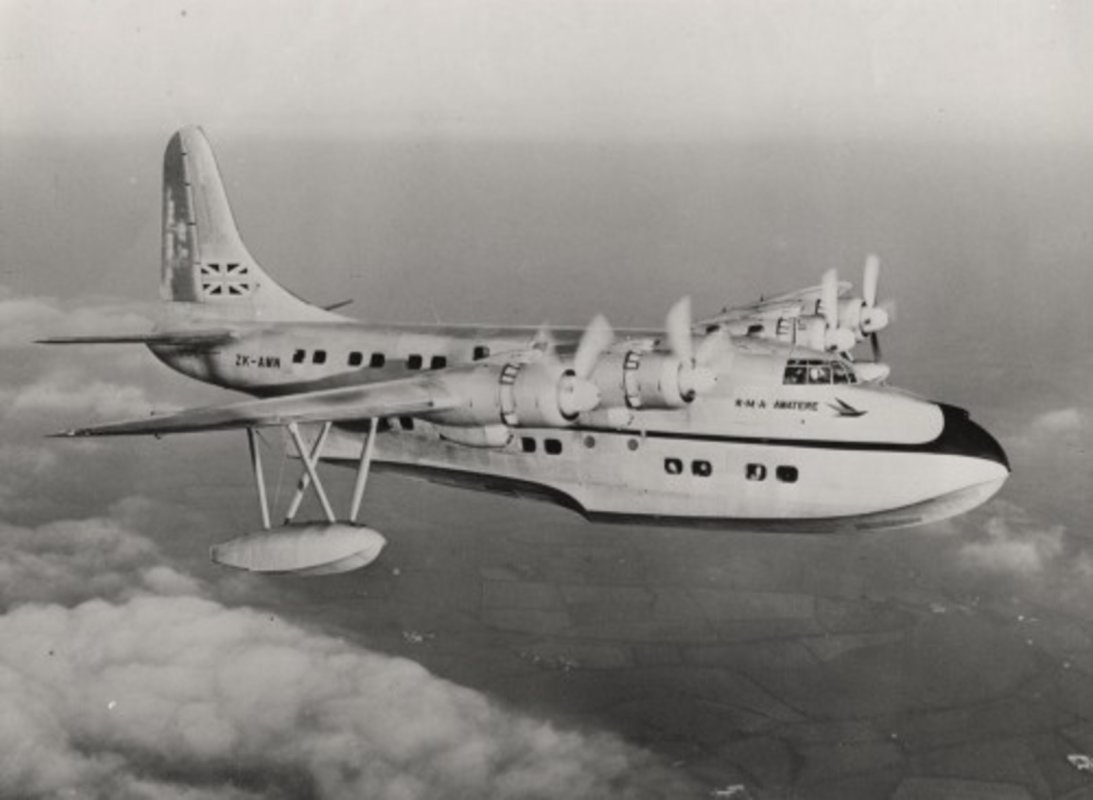
The S.30 and the Sandringham preceded the Solent in the TEAL fleet, and the Sunderland became a faithful and long-serving part of the Royal New Zealand Air Force. A fine example of a Sunderland forms a unique flying boat double in MOTAT’s aviation collection. Both can be seen at the Aviation Display Hall at MOTAT 2.
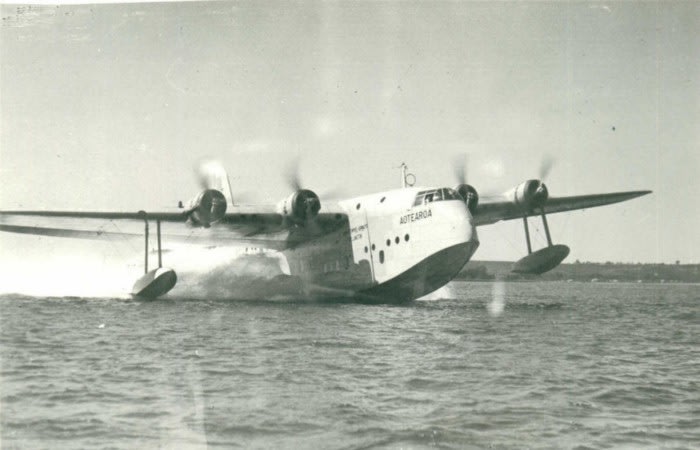
The 1930s and ’40s were truly the age of flying boats which were considered to be the way of the future for international air travel. They could land on water in otherwise inaccessible places, fuel could be provided more easily and less expensively on the coast than inland, and maintenance requirements were simplified by the availability of established dockyards.
In today’s sophisticated aviation environment with multiple airlines, worldwide air routes and modern airliners carrying passenger numbers unimagined in the 1930s, it is hard to envisage the excitement created by aviation at the time. Hundreds of thousands of sightseers lined Auckland’s harbour, and the water was crowded with small boats to witness the arrival of Pan American Airways, Sikorski S.42B flying boat ‘Samoan Clipper’ on a survey flight from San Francisco on 30 March 1937. Imperial Airways S.23 Empire Class flying boat, ‘Centaurus’, also a survey flight, arrived from London on 26 December 1937 — the globe had been spanned and it seemed that Auckland was, at last, an integral part of the modern world. The following day’s edition of the Auckland Star proudly announced, ‘Auckland Becomes World Air Terminus’.
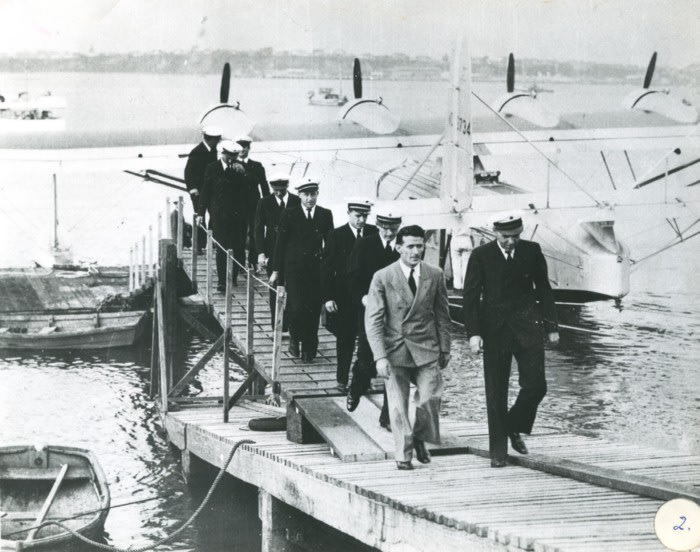
TEAL took delivery of its first flying boat, an S.30 ‘Empire Class’, on 29 August 1939. The first service left for Sydney on 1 April 1940 which, for the first time, enabled a direct air connection with the outside world for passengers and mail services from New Zealand. The 160mph cruising speed at an altitude of 5000–8000 feet in an unpressurised cabin, however, meant the 19 passengers and six crew had to endure a flight time of around nine hours!
Despite that, it was popular with travelers, and, by 1946, the initial weekly trans-Tasman service from Auckland in 1940 was increased to a daily one, and a service from Wellington was introduced in 1950.
When the Solent was produced in 1946, only four Mark IV versions were built, all of which saw service with TEAL. The requirement for higher-powered engines, higher speed and greater passenger capacity needed for Pacific stage lengths was influenced by TEAL’s Chief Engineer, George Bolt. Other refinements included Smiths Instrument’s new automatic pilot which, together with the higher-powered engines, made this flying boat unique in the world at the time.
TEAL’s first Solent arrived on 29 September 1949, and ZK-AMM ‘Ararangi’ was closely followed by ZK-AMN, ‘Awatere‘, ZK-AMO ‘Aranui’ (MOTAT’s Solent) and ZK-AML, ‘Aotearoa II’. A single Mark III, ZK-AMQ ‘Aparima’ was acquired in 1951.
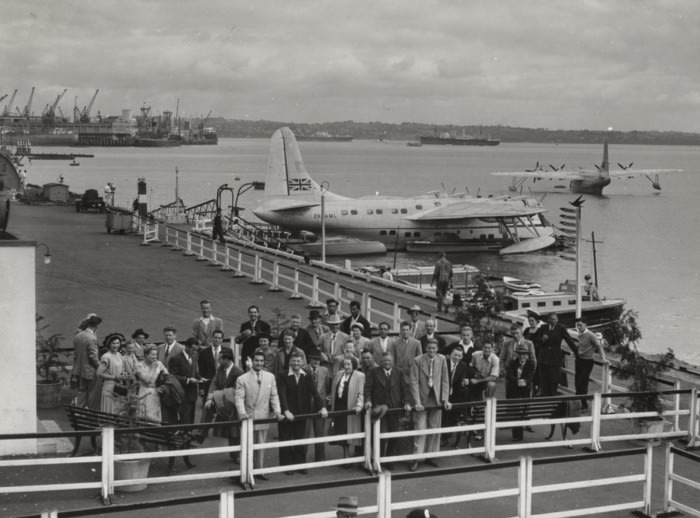
Solents cruised at 200mph on the power of their four 2040hp sleeve valve, Bristol Hercules engines, cutting the average trans-Tasman flight time to 6 ½ hours. They had a still air range of 3000 miles and could carry 45 passengers in considerable luxury, a significant advance on the 19 carried by TEAL’s earlier S.30 flying boats.
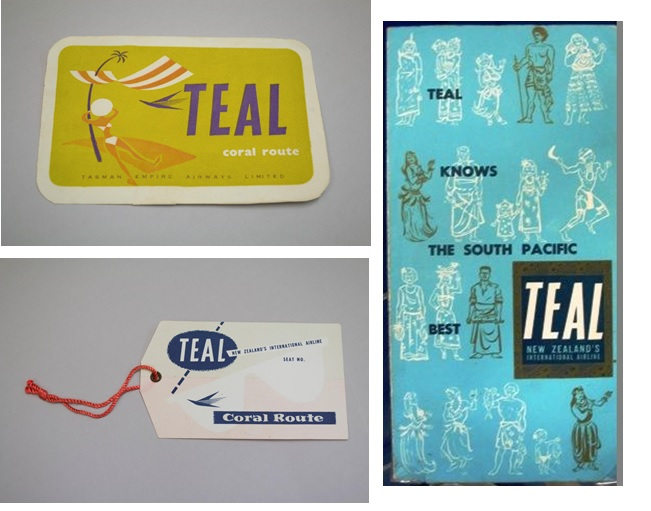
![Tasman Empire Airways Limited. Travel Bag [TEAL], 2004.427. The Museum of Transport and Technology (MOTAT).](https://images.ctfassets.net/mplktqcfflsk/6rXERyRSfbLBeoRdQzIulG/ec9da895e32701b5ee0b2fa402bf7cd1/0_j5IbNgBLaLvqG9j5.jpg?w=700&h=491&fl=progressive&q=85&fm=jpg&bg=transparent)
Pacific destinations were an obvious extension to TEAL’s route network and what was to become the world-renowned Coral Route was inaugurated in November 1951. Encompassing Fiji, Samoa, the Cook Islands and Tahiti, the route promoted the South Pacific as a rival to the Caribbean for exclusive island holidays. The aircraft carried a flight crew of eight — Captain, First Officer, Flight Engineer, Navigator and Radio Operator. A Steward and two Flight Stewardesses attended to the increased passenger load, who were accommodated on upper and lower decks. (All First Class!)
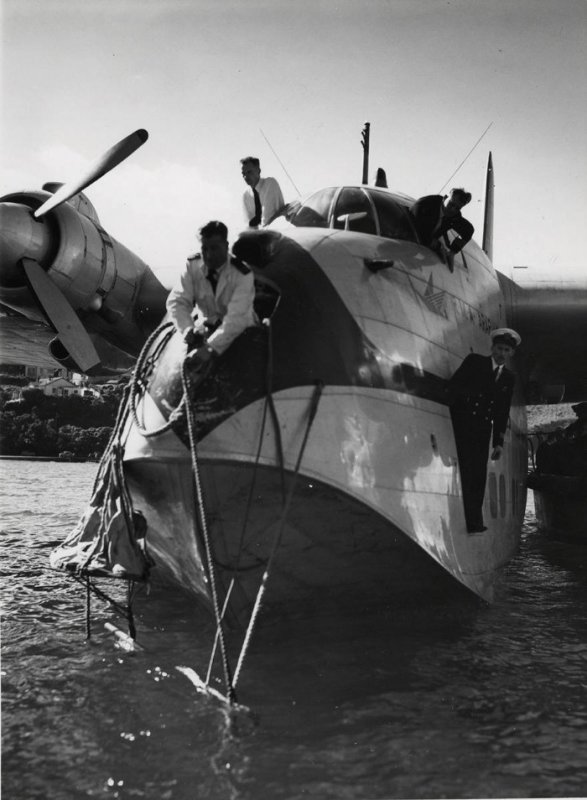
Because of the remoteness of the waypoints and the lack of ground support there, each flight also carried a ground engineer for line maintenance and a flight clerk to look after the paperwork.

Facilities and operations on the Coral Route could at times be unsophisticated, yet passengers reveled in the remoteness and charm of the islands. At times there was an enforced wait on remote beaches for the Solent to be re-fueled by hand from drums of petrol rowed out to the aircraft, or for an unscheduled and time consuming (as in days!) engine change.
On one occasion during a stopover on the island of Akaiami, an unserviceable engine had to be changed, necessitating the Solent being ferried to Tahiti on three engines where appropriate facilities existed to achieve this. The passengers stayed on Akaiami, and food and blankets from the flying boat were taken ashore for the enforced holiday, while the locals supplied supplementary food and entertainment.
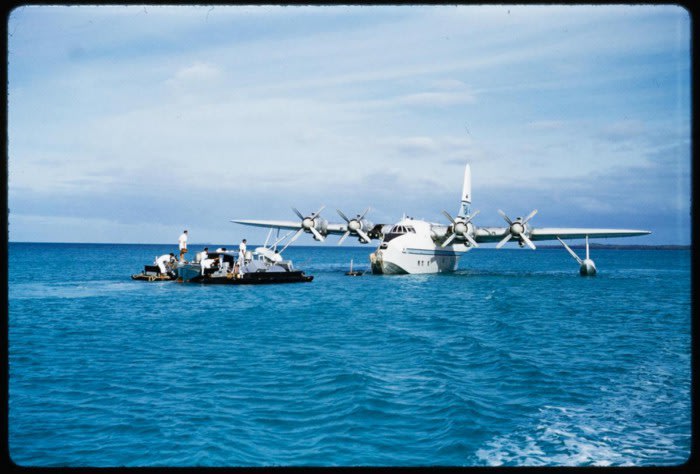
Whilst the reputation of the service was heady and romantic, the days of the flying boat had already been surpassed by the time TEAL introduced the Solent. With most of the world’s airlines operating land planes, carrying double the number of passengers in air-conditioned comfort and above the weather at 20,000 feet or more, the flying boat became uneconomic to operate.
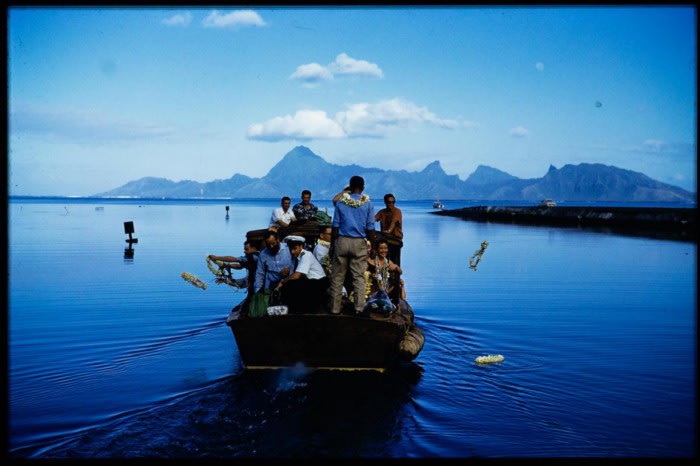
The last TEAL Solent flying boat service was undertaken on the Coral Route on 14 September 1960 by MOTAT’s Solent, ZK-AMO ‘Aranui’. The aircraft had an unblemished safety record and provided a unique service over the 11 years of its operation with TEAL. With this flight, TEAL had operated the last scheduled International flying boat service in the world.
Although a unique era in South Pacific aviation had ended, happily it was not the end for the last of the world’s Solents.
The fact that MOTAT’s Solent survived at all was due in no small part to the determination of the then General Manager of TEAL, Sir Geoffrey Roberts. He, and other like-minded individuals and organisations, lobbied hard to form a transport and aeronautical museum in Auckland, a dream that was realised in 1964 when MOTAT opened. Potentially ZK-AMO had a new home.
After being donated to MOTAT by TEAL in 1961, ZK-AMO, ‘Aranui’ had taxied up the Waitematā Harbour from TEAL’s Mechanics Bay headquarters to Hobsonville Air Base and was hauled out onto a grass hard stand. There it sat in company with four ex-RNZAF Sunderlands for the next 5 ½ years. Finally, over the weekend of 7–8 May 1966, the aircraft was transported up the harbour and across Meola Road to an outdoor site at the Keith Park Memorial Airfield for public display and restoration.
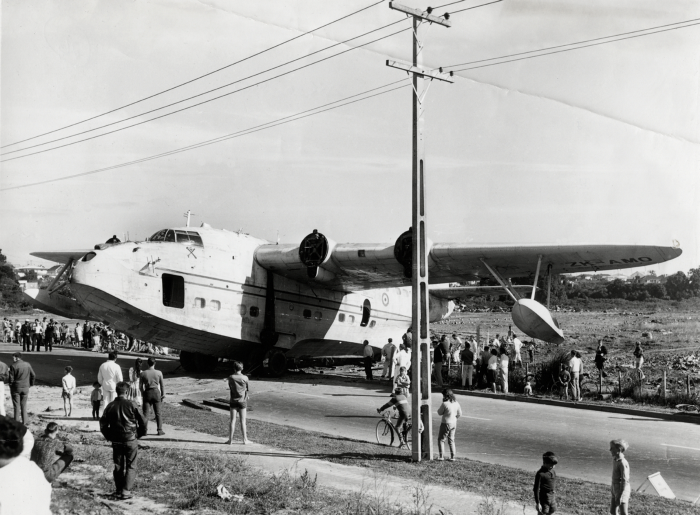
Unfortunately, the lack of suitable storage under cover meant that, again, it sat in the open and, despite valiant efforts by MOTAT staff and volunteers, was subject to further deterioration. It was not until 1982 that a dedicated group of ex TEAL and Air New Zealand staff formed the Solent Preservation Society and volunteered to undertake the massive task of restoration.
Although the group included experienced engineers and crew members, they also enlisted appropriate outside professional help and had surveys conducted as to the state and correction of exterior corrosion when required. The group refurbished the interior, replaced missing components and the windows, had the seating re-upholstered, and installed new carpet and curtains .
After the work was completed, Solent Preservation Society members gave regular guided tours of the cabins and flight deck, proudly showing the results of the massive effort which had gone into presenting ‘Aranui’ to an admiring public again. The Society wound up in 2005.
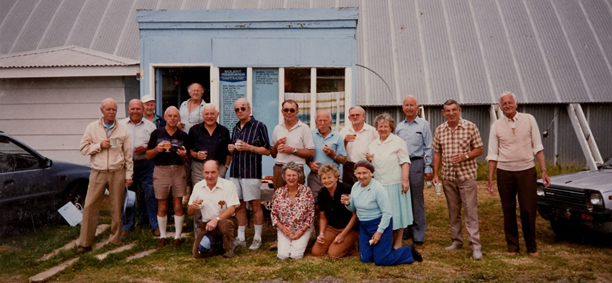
In 2009, ‘Aranui’ had to be moved outside once more while the Aviation Display Hall was extended. The elements again took their toll. Deterioration of the airframe and internal fittings was inevitable and further refurbishment became necessary.
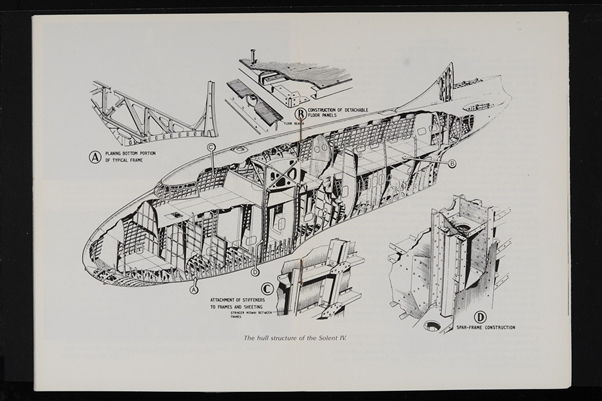
Steve Subritzky and his team at MOTAT 2 commenced the task in 2012. The effects of water leaks, exposure to salt air, the intrusion of feral cats and their waste and, in particular, leaking of the toilets all had to be remedied.
The aircraft was moved back inside to enable work on the airframe to begin. Some of the internal structure and various panels at the base of the keel had to be replaced. Difficult internal access to this area made the task particularly onerous. Riveting replacement panels involved many hours of cramped and frustrating work, one team member lying prone within the fuselage providing a base, while the other worked their way along the exterior of the keel applying the rivets.
Once the airframe was completed, work commenced on the internal cabins. With the 75th anniversary of its formation approaching, Air New Zealand made a generous cash donation which did much to advance the work. The floor and wall coverings were replaced, along with some internal structure including the exacting task of matching original materials and colourings.
Once externally secure, ‘Aranui’ was once again moved outside in 2017 to be water blasted preparatory to final completion of the keel and external painting. It was outside for 18 months, but there was only a brief period when it was without protection from the elements as scaffolding was erected and the entire airframe enclosed within a plastic covering. The first task was to water blast the entire surface — which resulted in some good and bad news for the restorers. The airframe was found to be in generally good condition, but a number of corroded panels had to be replaced. Each panel had to be drilled out, a supporting frame inserted internally and a new panel rivetted to the frame.
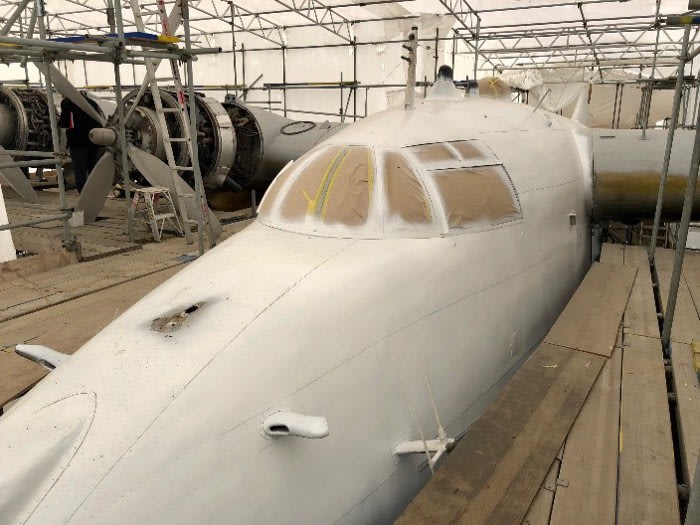
A particularly big job involved removing a large area of previously applied filler in the forward fuselage area and repairing the hatch through which the crew would secure the aircraft on arrival at their destination, as seen above in the photo of ZK-AMM berthing at Evans Bay, Wellington.
With the panel work completed, the airframe had a total of three coats of acid etch and primer applied, followed by four top coats of the correct shades of grey and white. This was followed by hand painting the appropriate TEAL logos and markings, with a few of the smaller details applied as decals.
External fittings, radio aerials and navigation aids were applied and on 15 March 2019, ‘Aranui’ was moved back inside the Aviation Display Hall again.
There is still much to be done internally, but the world’s only Mk IV Solent is now externally complete, under secure cover, and resplendent in the colour scheme carried in the last period of its operation from 1954–60.
Sir Geoffrey Roberts’s original vision to have the last TEAL flying boat restored and displayed in company with other historic aircraft in MOTAT’s collection has been achieved.
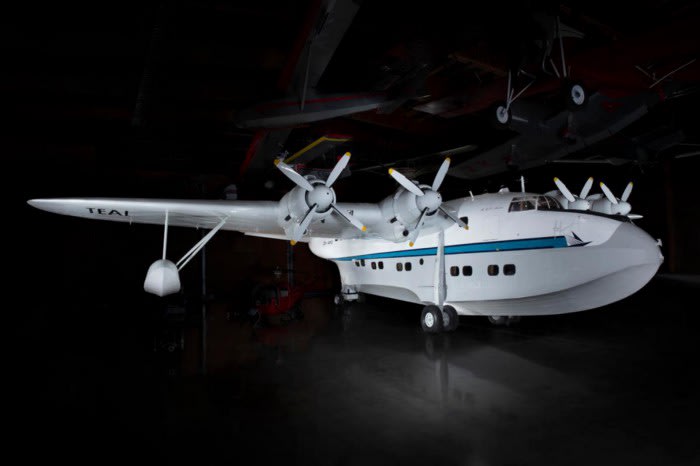
References
Air New Zealand: Celebrating 75 Years. c2014. Bauer Media Group (NZ) LP
Aircraft Record Section, Engineering Base, Christchurch. 1987. Air NZ Fleet History
Barton, Gerry and Philip Heath. 2015. Coral Route: Tasman Empire Airways Ltd, Flying Boats & The South Pacific. Steele Roberts Publishers
Gore, Len. 1991. Flying Boat Memories. Wakefield Press
Rennie, Neil. 1990. Conquering Isolation. The First 50 Years of Air New Zealand. Heinemann Reed